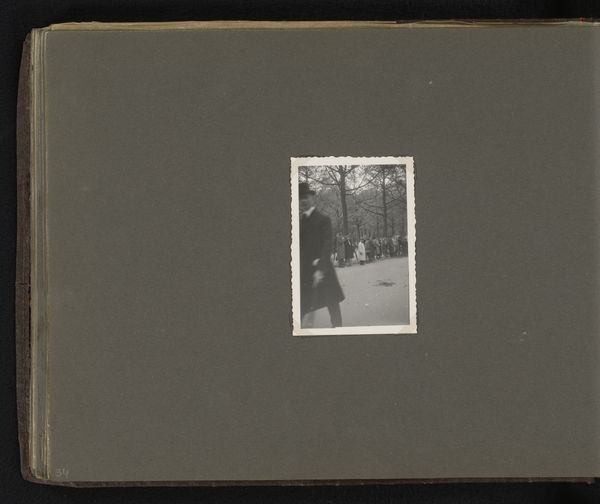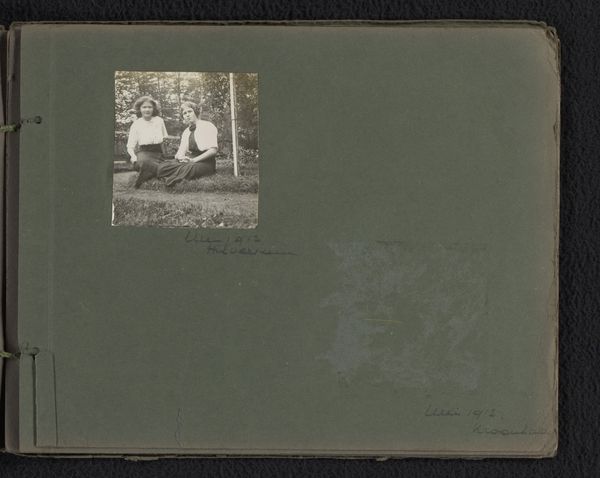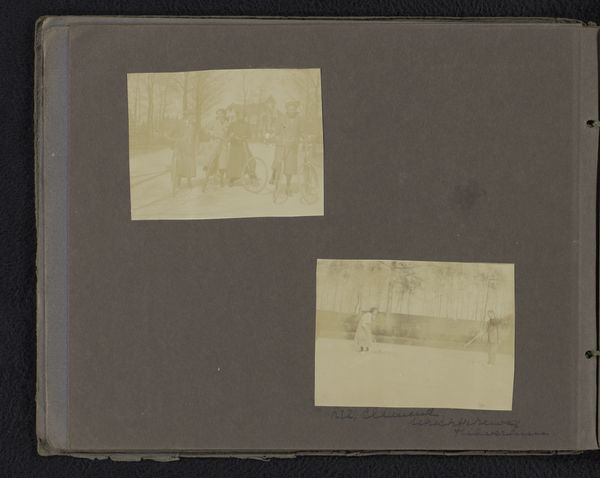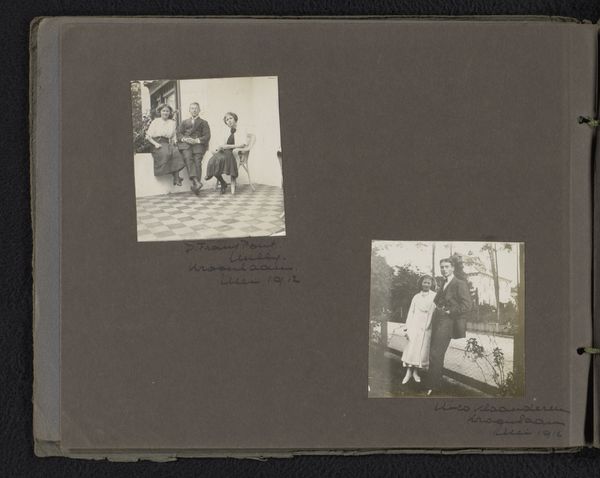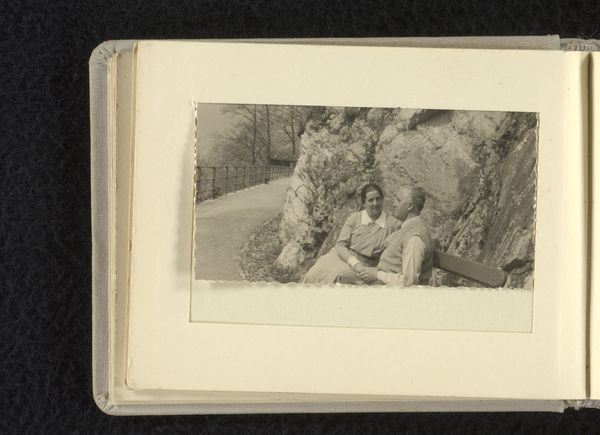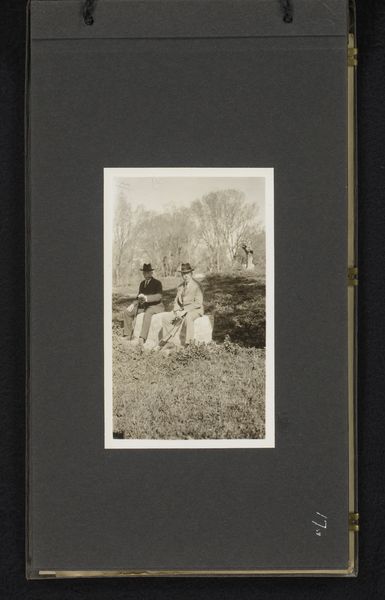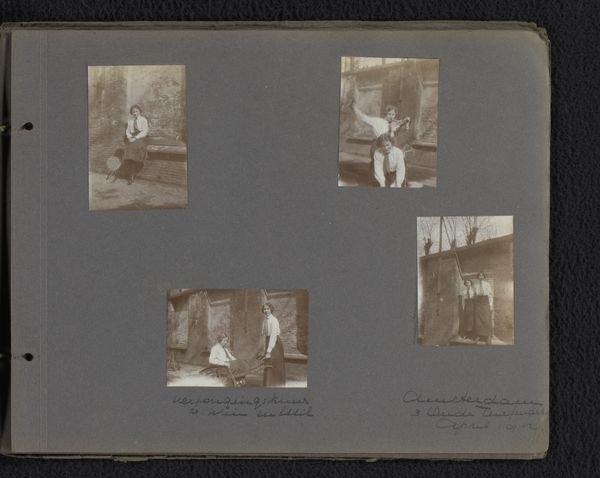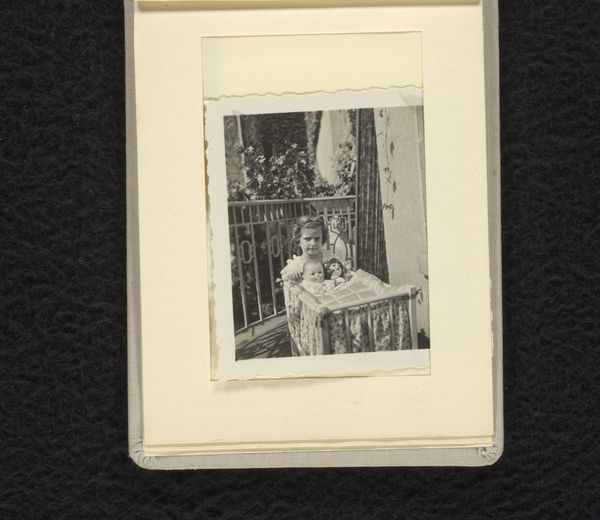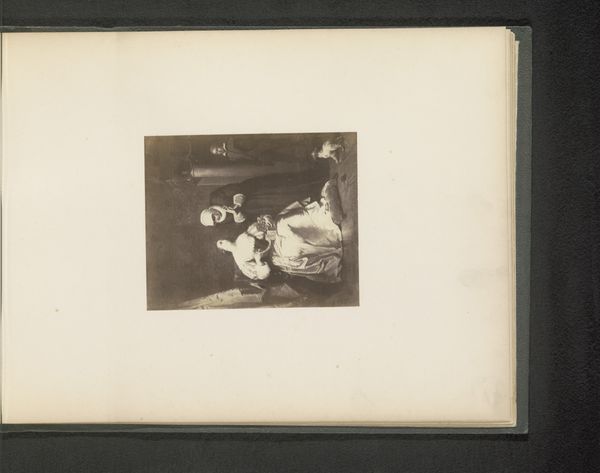
Isabel Wachenheimer met haar oom Willy Moos op een terras, 1932-1933, Duitsland 1932 - 1933
0:00
0:00
Dimensions: height 70 mm, width 100 mm, height 150 mm, width 210 mm
Copyright: Rijks Museum: Open Domain
Curator: Right now we’re looking at a gelatin-silver print from around 1932 or 33. The title tells us it’s a photograph called "Isabel Wachenheimer met haar oom Willy Moos op een terras, 1932-1933, Duitsland." The photograph seems to be torn right out of a family album. Editor: There's a fragile intimacy to the composition...it feels like I am peeking into a very casual moment, full of unspoken things. It gives me a certain poignant melancholy, don’t you think? The man is reclining but dressed so formally...a disjuncture. Curator: Well, in that period, this type of informal portraiture, this *slice of life* from the German Weimar Republic, really hinged on advancements in photographic technology. Easier to use cameras made pictures accessible to middle-class families—so images like these really spoke to a shift in visual culture. They capture social realities like never before. Editor: That might be the objective historical context, sure. But, honestly, for me it also conveys a sense of underlying unease, even menace. The darkness gathering at the periphery makes the bright central figures appear almost vulnerable. Especially knowing what would happen to Jewish families soon after it was taken. Curator: Absolutely. Looking closer, I'm really intrigued by the material qualities of the photograph. The texture, you can see the fibers of the paper... It seems to capture time so simply and directly using gelatin on silver salts to document a real world encounter and translate the interaction. A true form of evidence. It would be fascinating to compare the chemical process, which created this image with others being explored at the same time! Editor: Absolutely. It’s this paradox—a technique developed as “scientific fact” applied to very emotive effect. Photography changed both what we considered beautiful and the evidence of what actually *was*. You captured that tension really well there. Curator: Yes...I think this particular photograph is a stark reminder that we aren’t just viewing an artistic object, we are in communion with fleeting moment between two people and their experiences of history, captured, made into material form, and now preserved forever for us.
Comments
No comments
Be the first to comment and join the conversation on the ultimate creative platform.
